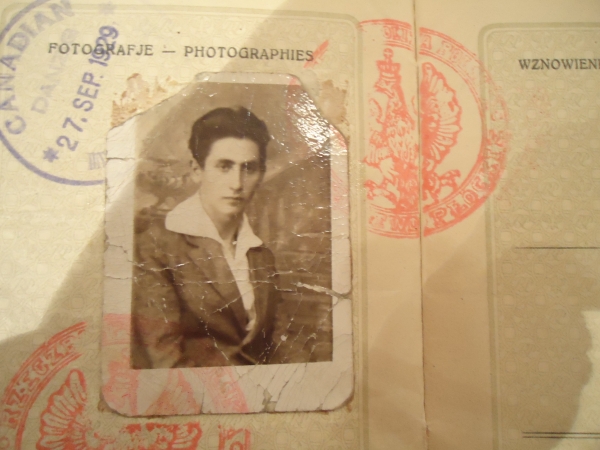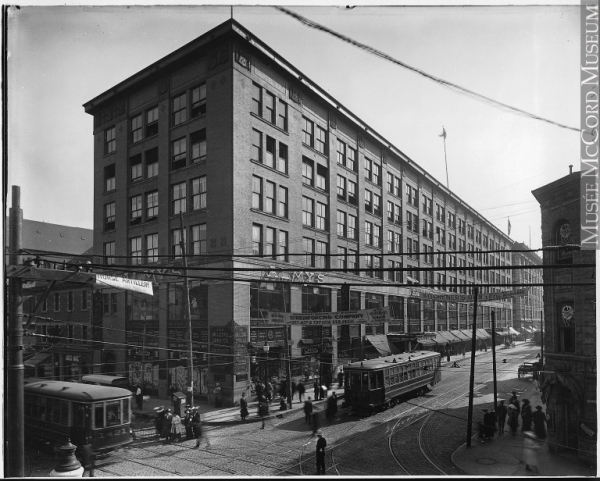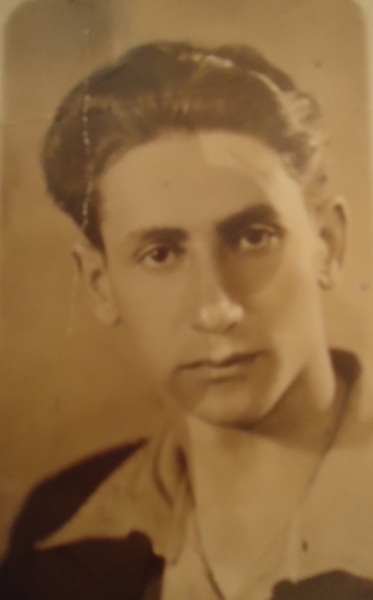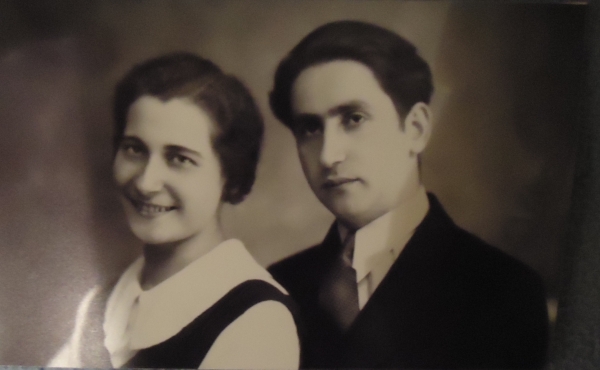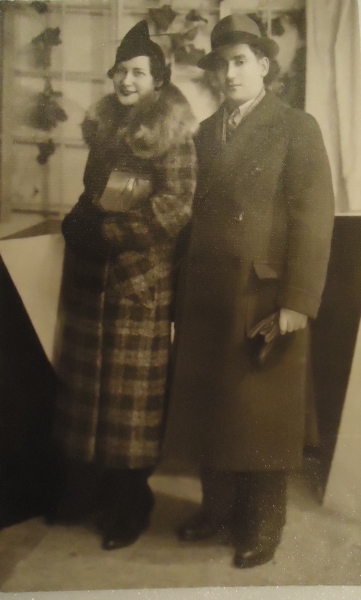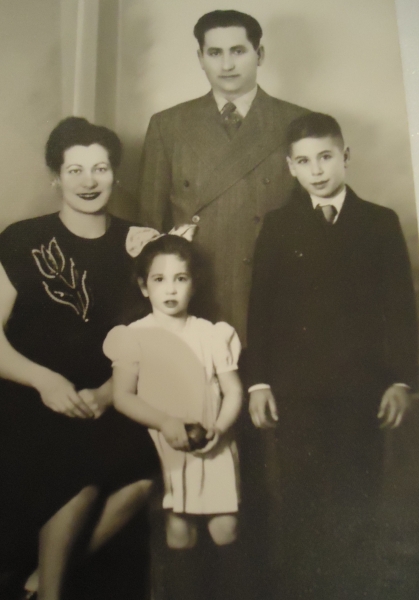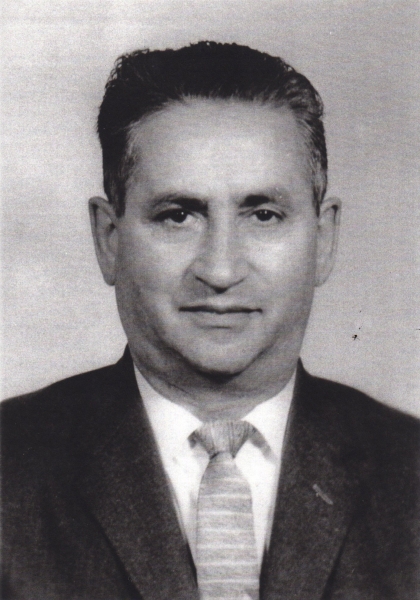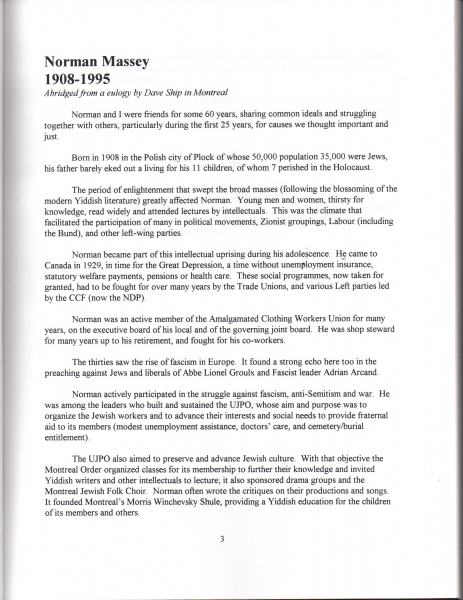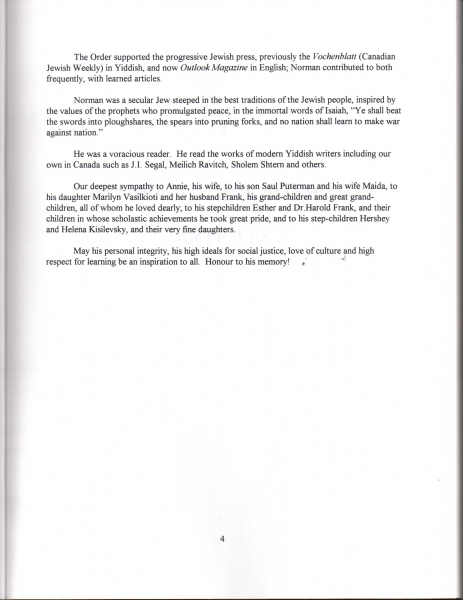Norman Massey - Parkley Clothes
1937 - 1941
372 Ste-Catherine O.
Fleeing police surveillance, “fascist terror and hopelessness”, a Polish revolutionary in his twenties, Norman Massey (a nom de plume for Noach Puterman), arrived in Montreal in late October 1929 – just in time to be greeted by Black Tuesday, the stock market crash that launched the Great Depression. After a brief turn as an upholsterer, Massey followed his comrades from the Young Communist League and the Jewish cultural centre he frequented into the needle trades. Among his garment industry employers was Parkley Clothes, a clothing manufacturer operating out of the Belgo Building located on Ste-Catherine west of Bleury.
A lifelong union man, Massey was an executive of Local 277, a “pants-and-vestmakers” local of the Amalgamated Clothing Worker of America union. Massey continued to work in the trade well into the 1970s as a menswear pocketmaker, a career shift he attributed to vests having fallen out of fashion around World War II. In addition to his union work, Massey was a correspondent for the socialist Yiddish newspaper Vochenblatt and a leader of the United Jewish People’s Order of Canada, a secular socialist fraternal organization. In 1935 Massey married Sema Stutman, a dressmaker and Industrial Union of Needle Trade Workers member who came from an active union family.
These excerpts of his oral history appear in Seemah C. Berson’s I Have a Story to Tell You (WLU Press, 2010):
You will see if you follow the history of the class struggle – as it was in Germany – German bosses hiring fascist gangsters and giving them power in establishing a Hitler regime to destroy their own workers. That’s class struggle. I know of cases in the dress industry – not in our industry – where Jewish girls put crosses on their necks to get a job! And they also spoke French – many of them learned French – to speak to the boss to give them a job. And when the boss found out that they were Jewish, they had a slim chance of getting a job because they called them troublemakers, that they may organize a union! . . . The class interests are always above the national interests amongst manufacturers, whether they’re Jewish or Italian or otherwise. In fact, I know of a case of a shop on St. Lawrence near Mount Royal – I’ve forgotten the name of the place, it’s a big place – and, at the time of the organization of the dressmakers, the boss made anti-Semitic speeches – a Jewish boss – to French girls, telling them he doesn’t want to hire Jews: they’re troublemakers, they’re communists. Yes, that happened. It happened in Canadian Waist and another big firm. I forgot the name. One of them is still in existence. Canadian Waist doesn’t exist anymore.
I met my wife—by the way, she passed away about six months ago—I met my wife in many places. In the Industrial Union she was working at a dress shop and she tool part in a famous dress strike led by the Industrial Union in 1935, where Joe Gershman was the leader of the union…I met her at mass meeting. I attended meetings of all kinds of unions. I was interested in knowing of the conditions and what’s taking place. I could say that—I don’t want to praise myself!—I was political dynamite in the needle trades! It’s there I met my wife. She was five years younger than I was. I don’t have to give you the reasons why boy meets girls. I also met her in the cultural centre. Her name was Sima Stutman. The Stutman family were progressive. It was a progressive family. Her oldest brother was first active here in the progressive movement and then he went to the United States. He’s still there, active in the progressive movement. His name is Eddie Stark. The whole family worked: the father, the sisters. And they were all trade union members. Three of them were members in the Amalgamated Clothing Workers Union, the same union to which I belonged. Sima, my late wife, was a member of the Industrial Union until we got married and she lost her job and wasn’t looking anymore for a job. We lived, I would say, happily; without much comfort, but we were happy. We worked together in the organization, the Young Communist League, That’s how we progressed (96-97).
The majority of Jewish immigrants who came were needle workers at home, in the Old Country. Whether they were qualified technicians and mechanics or not, they were needle workers, the majority of them. And when they came, many of them became bosses. They worked themselves up and their relatives were in the needle trades or they had relatives who were in the grocery business and they were linked with the needle industry – just like the Greeks who come here now – most of their relatives get jobs in the needle industry, or the Haitians – they go into the needle industry, the French-speaking people. (97–98)
Compiled by Sarah Woolf and Seemah C. Berson.
Links
Liens
"Arts from the Inside - Preserving the Creative Ecosystem" by Bettina Forget - ELAN"Moses Mendelssohn: Father of the Haskalah" By Norman Massey
A Balcony Under Threat in Balconville - Third Solitude Series
Canadian Jewish Heritage Network - United Jewish People's Order
I Have a Story to Tell You - Seemah Berson
United Jewish People's Order
VIEW-16190 | Corner Bleury and St. Catherine Streets, Montreal, QC, 1916 - McCord Museum
Sources
Berson, Seemah C. (ed.) I Have a Story to Tell You. Waterloo: Wilfrid Laurier University Press, 2010.
*Images courtesy of Marilyn Vasilkioti, Esther Frank, McCord Museum and Interactive Museum of Jewish Montreal.

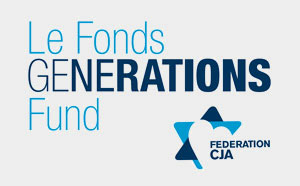
This project is funded in part by the Government of Canada.
Ce projet est financé en partie par le gouvernement du Canada.
Ce projet est financé en partie par le gouvernement du Canada.
This project is funded in part by the Government of Canada.
© 2011-2015 Museum of Jewish Montreal, All Rights Reserved.
Site by Air Code Design inc. ![]()
© 2011-2015 Musée du Montréal Juïf, Tous droits réservés. Site par Air Code Design inc. ![]()
